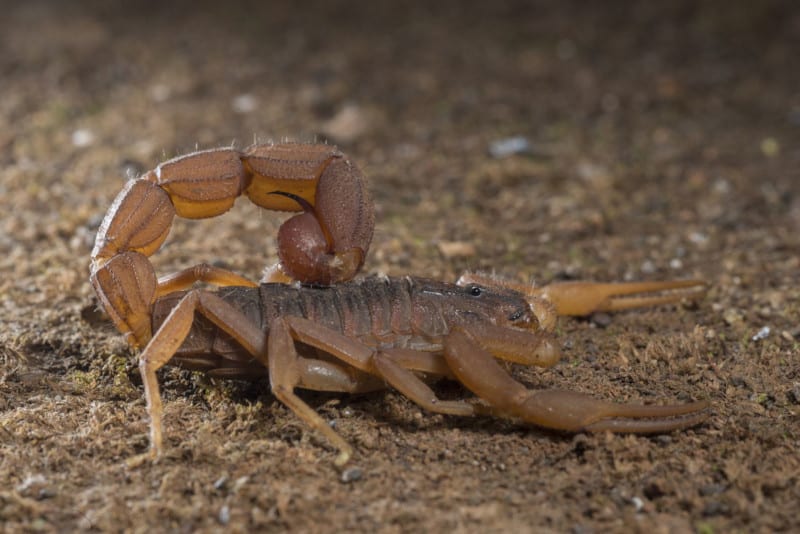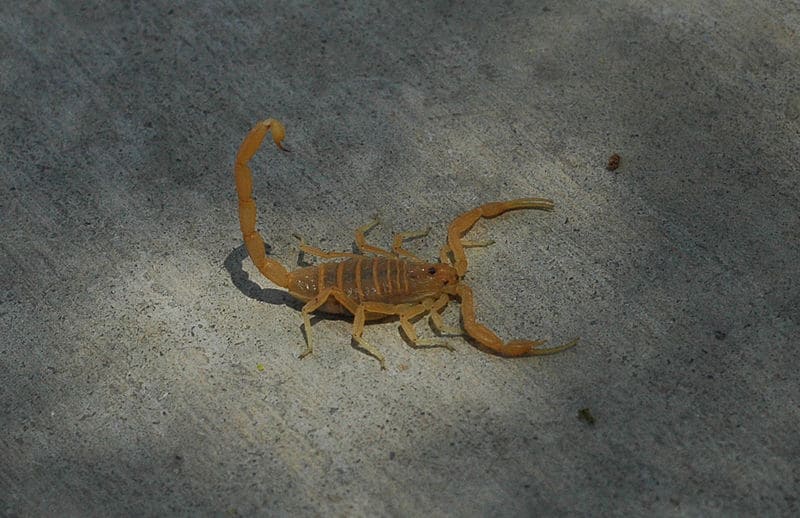Arizona Bark Scorpion Facts
- Most notably, but perhaps not surprisingly, the Arizona Bark Scorpion, Centruroides sculpturatus, is fairly dangerous.
- To clarify, this truly impressive invertebrate is the most poisonous scorpion in North America. Thankfully, however, envenomings rarely occur.
- Though not commonly fatal, the effects of its venom can last as long as 72 hours. In addition, its venom causes severe pain, along with numbness, tingling, and vomiting in adult humans.
- However, its numbers appear to be declining rapidly, due to several reasons. Development, pesticides and collecting scorpions for research appear to be the main causes.
Related Articles
Arizona Bark Scorpion Physical Description
Firstly, the amazing Arizona Bark Scorpion, like many related species, displays a slight degree of sexual dimorphism.
Also, an adult male can reach a length of as much as 3.1 in (8 cm). Yet a female has a maximum length of only about 2.75 in (7 cm).
Also, its coloring provides it with excellent camouflage. The body usually presents a yellowish-brown, yet the tail and appendages show dark yellow.
- Kingdom: Animalia
- Phylum: Arthropoda
- Class: Arachnida
- Order: Scorpiones
- Family: Buthidae
- Genus: Centruroides
- Species: C. sculpturatus
Arizona Bark Scorpion Distribution, Habitat, and Ecology
Its common name, the Arizona Bark Scorpion, is somewhat misleading. It actually lives in the Sonoran Desert in the southwestern United States and northern Mexico.
In addition, it prefers riparian areas with mesquite, cottonwood, and sycamore groves. All of these have sufficient moisture and humidity to support insects and other prey species.
Further, the Arizona Bark Scorpion is nocturnal and prefers to ambush its prey. The usual food is crickets, roaches, beetles, and other small insects.
Furthermore, it is one of the few scorpions in the southwest that can climb walls, trees, and other objects with a sufficiently rough surface.
It itself, in turn, also falls prey to a wide variety of animals. These include birds, reptiles, and other invertebrates, for example. Moreover, some examples include snakes, spiders, rodents, and even other scorpions.
Species Sharing Its Range
Check out our other articles on 5 Remarkable Bolivian Herbaceous Plants, Giant Camel Spider, Breathtaking Asian Species, Chatham Island-forget-me-not, Ebor Falls


